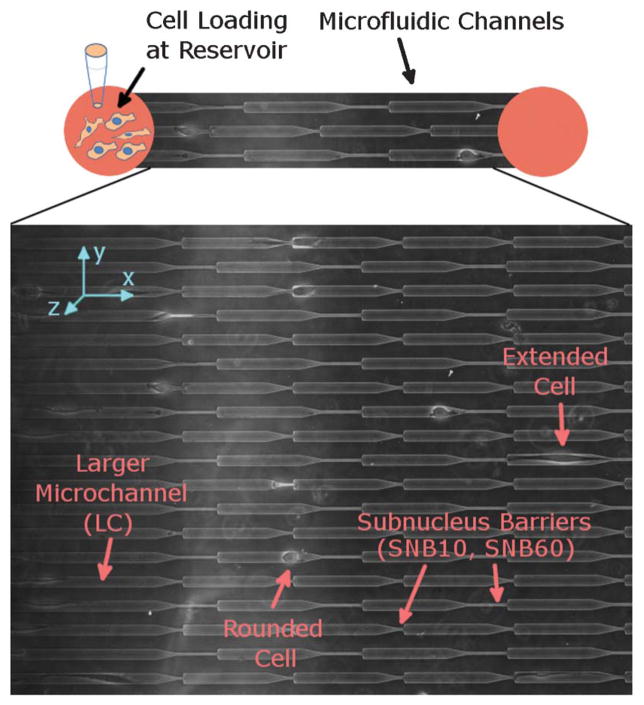Fig. 1.
Device design. Microfluidic channels connect two port reservoir regions. Cells are seeded into the reservoir and allowed to invade into the channels. In the actual device, the two ports are connected to the same larger reservoir in order to allow for pressure equilibration and a larger volume of media to be supplied. Expanded view: the multi-staged serial invasion channels (M.U.S.I.C.) device consists of repeating patterns of a larger channel (LC) with width (15 μm) on the scale of the cell connected to a smaller channel (the subnucleus barrier) with width (3.3 μm) smaller than the typical cell nucleus. There are two designs for the subnucleus barrier (SNB)–one is shorter than a typical cell (SNB10) and one is longer (SNB60), with lengths 10 μm and 60 μm, respectively. Transition dynamics occur when cells squeeze across the subnucleus barriers.

